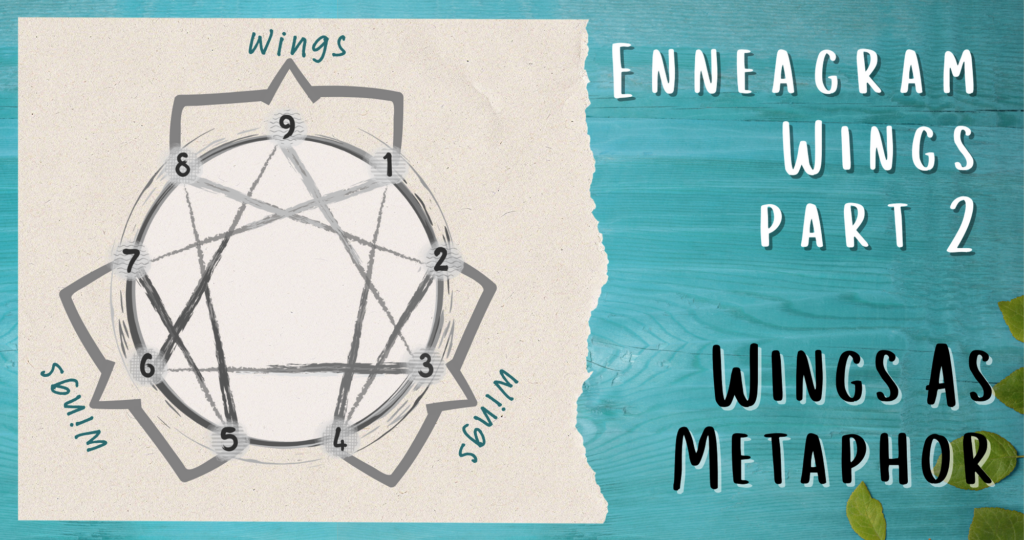So are there wings as we think we know them? Maybe yes and maybe no! In addition to the areas mentioned in the first blog on Enneagram wings, here is some additional information about the types on either side of our core (dominant) type.
Shadows: past and future
The concept, which many people find quite powerful, is that the type number behind your core Enneagram type represents the shadow of your past and the areas you need to integrate (to both “own” or accept as part of you and to develop) into your core type. After that integration, the type number numerically after your core type represents the shadow of your future growth and development. This theory does not label the type numbers on either side of our core type as wings.
In this concept or theory, shadow does not refer to only negative qualities; it can also refer to more positive or even neutral qualities. For example, an Enneagram One might first need to integrate aspects of type Nine such as accepting that there are multiple perspectives in most situations and not just one correct idea or right way to move forward. From there, Enneagram Ones might work on developing certain aspects of type Two. For example, Ones can work on opening up their Heart Centers more as a way to both access their own feelings and be more empathic toward others.
Type numbers as points of resolution
The concept, which many people find disconcerting at first, is that any given Enneagram type is actually an attempt at resolving the issues and internal dynamics of the types on either side of them. In giving this example, I acknowledge it is, in a sense, a caricature, yet it is only an example to make a point.
Enneagram type Three, for example, is a resolution of the issues at type Two and Type Four. As type Three sits between these two types, the issues of type Two reflect the idea that it is all about people’s feelings, especially other people’s feelings and needs. On the other side of type Three, the issues are that it’s all about me, my needs and my feelings. What is the Three to do? Is it all about feelings? Is it the feelings of others or their own? A way of resolving this dilemma is the Three position: All this emphasis on feelings to what end? Is anything actually being done or accomplished? I will push my feelings to the side and make things happen.
The reason this concept can be disturbing at first is that it suggests that there may be no type Three in and of itself, just the resolution of types Two and Four. On the other hand, if types Two and Four did not exist, they couldn’t be used as reference points needing resolution at Three. Hmmm. The paradox within this concept is that each type does exist and it also does not.
Summary
I first learned the two ideas in a conversation years ago while having lunch with Michael Goldberg, although I have heard them discussed in other arenas. In my programs, sometimes participants get very concerned about what wing they have, but when I present the above concepts as ideas to consider, they relax.
I cannot say with any certainty that wings exist or they do not. I think the word wing might be a metaphor for the two concepts above, which are quite useful in our growth and development.
Ginger Lapid-Bogda PhD, author of nine Enneagram books, is a speaker, consultant, trainer, and coach. She provides certification programs and training tools for business professionals around the world who want to bring the Enneagram into organizations with high-impact business applications. TheEnneagramInBusiness.com | ginger@theenneagraminbusiness.com


Comments are closed.